In an increasingly interconnected global economy, trade policies like tariffs often seem far removed from the day-to-day operations of nonprofit organizations. However, the ripple effects of tariffs can—and do—reach into the nonprofit sector, influencing everything from operational costs to donor behavior.
While tariffs are typically discussed in the context of global commerce and manufacturing, their broader economic consequences present real challenges and opportunities for nonprofits. For nonprofit executives and board members, understanding these impacts is essential to safeguarding fundraising and diversifying revenue streams in the face of uncertainty.
How Tariffs Affect Nonprofits—Directly and Indirectly
At a high level, tariffs increase the cost of imported goods. While nonprofits may not be importing goods themselves, many are reliant on vendors and suppliers that do. Rising costs for technology, supplies, printed materials, or event equipment can squeeze tight budgets. The effects can be felt in several ways:
- Rising Operational Costs
Higher prices on materials and equipment—such as printed fundraising materials, technology hardware, and capital campaign supplies—can force nonprofits to cut corners or reallocate funds away from mission-critical work. - Decreased Donor Capacity
Tariffs can drive inflation and cost-of-living increases, particularly in lower-income communities. This affects individual donors’ discretionary income, reducing their ability to give. Even high-net-worth individuals and corporate donors may recalibrate their charitable giving in response to increased business costs or market volatility. - Impact on Corporate Partnerships
Many nonprofits rely heavily on corporate sponsors whose budgets may be impacted by raw materials, machinery, or finished goods tariffs. This can lead to reduced sponsorships, delayed commitments, or a pivot in funding priorities. - Uncertainty in Global Aid or International Programs
Nonprofits working internationally may find that tariffs complicate shipping humanitarian aid or affect partnerships with global NGOs, adding costs or regulatory burdens that slow impact.
What Nonprofits Can Do Now: Strategic Responses
While the causes of tariffs lie well outside the nonprofit sector’s control, there are proactive steps organizations can take to adapt, mitigate risk, and strengthen their financial resilience. Here’s how to lead through this challenge:
Reassess and Diversify Revenue Streams
The most effective protection against economic uncertainty is a well-diversified funding portfolio. Consider these options:
- Expand digital fundraising: Virtual giving campaigns, recurring donor programs, and peer-to-peer fundraising platforms can scale with minimal overhead.
- Pursue earned income strategies: Explore social enterprise models or fee-for-service offerings aligned with your mission.
- Seek multi-year grants: Long-term funding provides more stability and allows for better planning and investment in capacity-building.
- Build stronger individual donor pipelines: Invest in data analytics to better understand and engage donors with tailored communications.
2. Revisit Vendor Contracts and Supply Chains
If your nonprofit depends on printed materials, event rentals, tech hardware, or construction, revisit your vendor agreements:
- Negotiate better pricing or explore local sourcing to avoid import-related costs.
- Consolidate purchases with other nonprofits to increase buying power and lower unit costs.
- Adopt digital tools instead of physical items when possible—for example, digital annual reports instead of printed ones.
3. Strengthen Corporate Partnerships Through Transparency
If you rely on corporate donors or sponsors, open a conversation about the impacts of tariffs on their business and how your partnership could evolve:
- Position your organization as part of its community engagement strategy, offering co-branded campaigns or employee engagement opportunities.
- Propose flexible sponsorship models, such as in-kind contributions or phased payments, to help maintain the partnership during leaner times.
4. Enhance Financial Planning and Scenario Modeling
CFOs and finance teams should incorporate potential cost increases into their budgeting and forecasting models. Build out different scenarios for rising expenses or decreased revenue:
- Stress-test your budget by modeling how a 5-10% cost increase would impact operations.
- Create contingency plans that prioritize mission-critical activities.
- Invest in reserve funds or board-designated endowments to cushion against short-term disruptions.
5. Engage Your Board in Strategic Oversight
This is a crucial time for board engagement—not just in governance but in strategy and fundraising:
- Encourage board members to open doors to new funding opportunities or serve as ambassadors in industries affected by tariffs.
- Hold strategic retreats to reassess your revenue model, examine trends, and align around key priorities.
- Ensure the finance committee actively monitors economic trends and their implications for your organization.
6. Communicate With Donors Honestly and Optimistically
Donors appreciate transparency. If rising costs are affecting your programs or your ability to meet needs, say so—but balance realism with optimism:
- Share specific examples of how increased costs (e.g., printing, shipping, construction) affect your impact.
- Frame these messages regarding resilience and opportunity: “We’re finding new ways to do more with less, and your continued support helps us innovate.”
Final Thoughts: Resilience Through Strategic Adaptation
While nonprofits can’t control global trade policy, they can control how they prepare for and respond to its effects. Tariffs are one of many external forces—inflation, supply chain disruptions, and labor shortages—that require thoughtful leadership and strategic agility.
By taking a proactive approach to financial planning, deepening donor relationships, and building more resilient revenue streams, nonprofit organizations can continue to thrive—even when the global economy presents unexpected headwinds.
Tariffs may be beyond your control, but preparation, creativity, and collaboration are well within reach.
Grassi’s Nonprofit advisors help organizations fulfill their missions through operational efficiencies, risk management and financial health. Our dedicated team of nonprofit specialists are highly skilled at identifying and addressing the operational, technology, governance and other issues that keep your organization from reaching its highest goals.
Contact one of our experienced professionals today.

